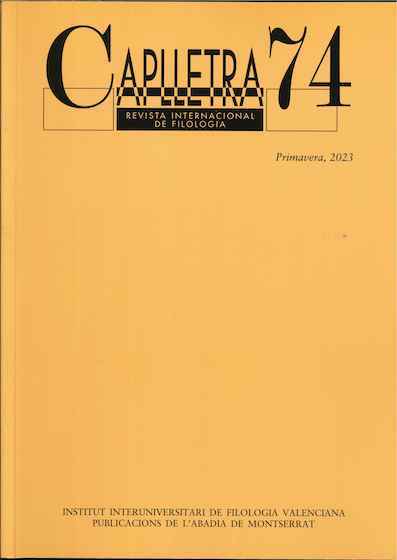Differential object marking in Romanian: an overview
DOI:
https://doi.org/10.7203/caplletra.74.26044Keywords:
differential object marking, Romanian, preposition, animacy, specificity, clitic doubling Abstract
Abstract
This article offers a descriptive overview of the most important empirical traits that characterize differential object marking (DOM) in modern standard Romanian, ranging from purely interpretive parameters to the more syntactically oriented ones. Various aspects are reviewed, among which the argumental status of Romanian differentially marked objects, despite overt prepositional marking, interactions with clitic doubling, or with the animacy and specificity scales. The final part is dedicated to a presentation of the numerous problems Romanian DOM raises for formal accounts. Against this background, it is shown that analyses which take this phenomenon to signal a mechanism at the syntax-semantics-pragmatics interface appear to be best suited for the data.
 Downloads
Downloads
Downloads
Published
How to Cite
-
Abstract206
-
PDF435
Issue
Section
License
Authors submitting work to Caplletra for publication must be the legitimate holder of the usage rights. Legitimacy for the purposes of publishing the work must also include images, tables, diagrams and any other materials that may complement the text, whether they are the author of such material or not.
Copyright: on publishing their work in the journal, the author grants Caplletra. Revista Internacional de Filologia usage rights (reproduction, distribution and public communication) for both the paper printed version and for the electronic version.
All work published in Caplletra is covered by the Creative Commons license type Attribution-NonCommercial-NoDerivatives 4.0 (CC BY-NC-ND 4.0).
RESPONSABILITY
Caplletra. Revista Internacional de Filologia does not necessarily identify with the points of view expressed in the papers it publishes.
Caplletra. Revista Internacional de Filologia accepts no responsibility whatsoever for any eventual infringement of intellectual property rights on the part of authors.






